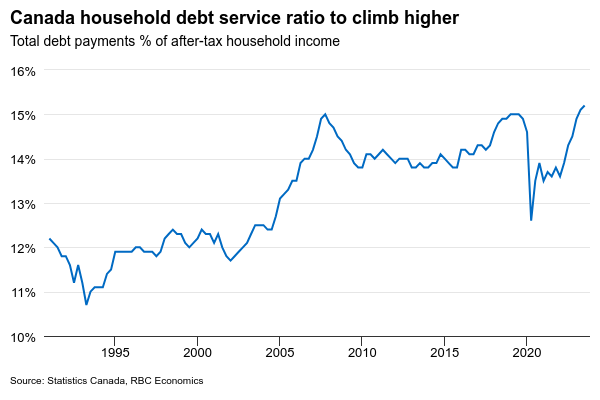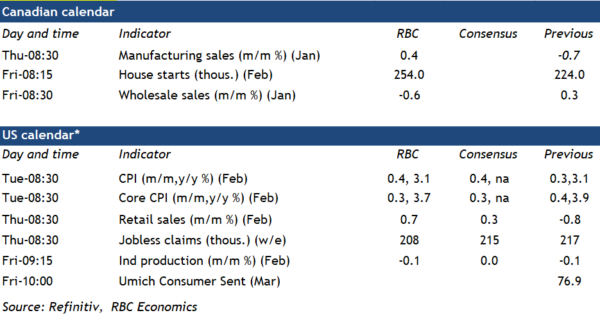U.S. inflation numbers will be in the spotlight on Tuesday as U.S. Federal Reserve officials consider when it might be appropriate to begin lowering interest rates.
Inflation pressures eased significantly last year largely without the economic pain that was feared when the Fed began aggressively hiking interest rates. But a resilient economic backdrop and strong consumer spending also means there is a risk that price growth could reaccelerate—and those fears grew after a broad-based upward surprise in January’s inflation numbers.
We look for a softer price report for February with consumer price index growth holding at 3.1% on higher energy prices, but slower “core” (excluding food and energy) price growth. Gasoline prices jumped 4.4% by our count in February and food prices should continue to edge higher from last month, albeit at a slower rate. Core inflation is expected to slow to 3.7% from a year ago on a 0.3% increase from January. Shelter costs still account for a disproportionate share of the price growth and that is expected to continue slowing as moderation in home rent growth passes through to lease renewals. Consumer demand is still strong, but we expect a 0.7% increase in U.S. retail sales on Thursday after the CPI report. This will largely be a result of higher gasoline prices and will not fully recover from the 0.8% drop in January.
In Canada, fourth quarter national balance sheet numbers should show the household debt service ratio rising to another new record as higher interest rates pass through to debt payments. We expect household net worth was little changed with strong equity markets boosting the value of financial asset holdings and offsetting a pullback in house prices. The household credit market debt-to-income ratio likely edged lower with household income growth outpacing debt growth.
Week ahead data watch
Manufacturing sales likely inched up 0.4% in January, according to Statistics Canada’s advance indicator. Sales in transportation equipment and machinery subsectors led the growth. The Industrial Product Price Index fell about 0.8% from December on a seasonally adjusted basis, indicating an upswing in sales volume.
Statscan’s early indicator showed a dip (-0.6%) in January “core” wholesale sales (excluding petroleum products, other hydrocarbons, oilseed and grain) with sector-wide declines, especially in building materials and the supplies subsector.
Housing starts are expected to rise to 254,000 in February, consistent with the bouncing back of building permits in January.














